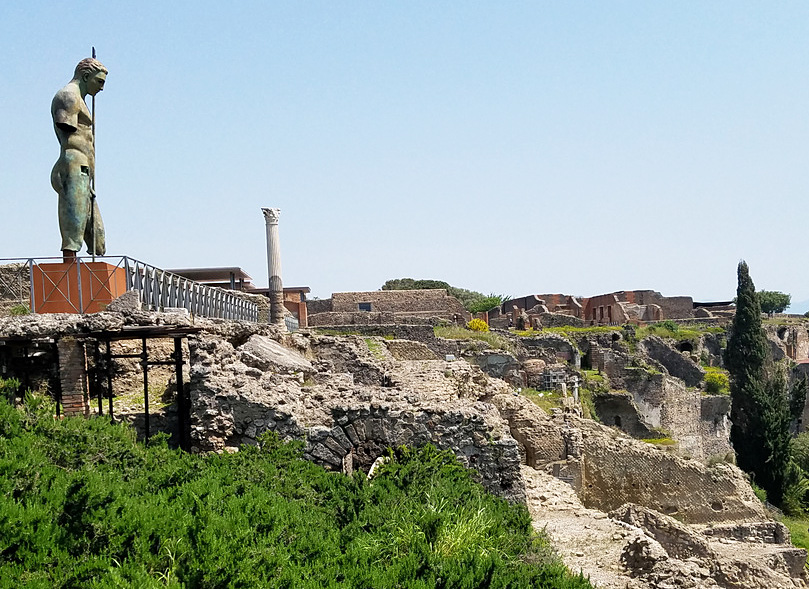
Do you believe that some facts can be stranger than fiction? When talking about the ancient Roman city of Pompeii this tends to be true. Many centuries ago, Pompeii was a flourishing town within the great Roman Empire. The one big difference between Pompeii and other Roman towns was the fact the Pompeii was established extremely close to a volcano (Mt. Vesuvius) that stood towering over the ancient city.
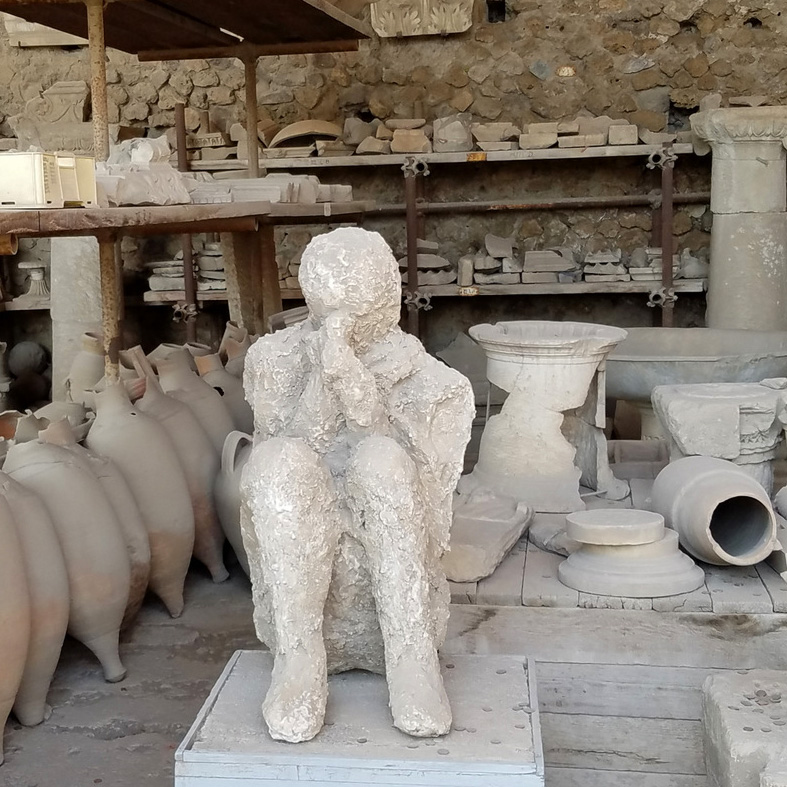
The volcano often rumbled and caused earthquakes but the area was always able to come back and return to normal life. Mt. Vesuvius, unfortunately for the citizens of Pompeii eventually proved to be a deadly volcano. The fatal blow occurred in 79 A.D, with one mighty and devastating eruption. Volcanic ash completely engulfed the city unexpectedly and it completely encapsulated the last moments of life for Pompeii. This catastrophic event froze the city in time for hundreds of years. Up until the 16th century, the lost city of Pompeii remained buried 19 feet deep in ash and debris.
Fact #1: When Did Mt. Vesuvius Erupt?
You would think that after hundreds of years of research, someone might have figured out when exactly Mt. Vesuvius erupted and totally whipped out Pompeii. For a while, everyone agreed that the natural catastrophe struck on 24th August 79 AD. However, recent findings have placed a shadow of doubt on this date. That’s because an inscription was found that was dated the 17th of October. This date is nearly two months after the previously proclaimed date. Archeologists have also found ‘autumnal fruits and heating braziers’ during their digs, supporting the new autumn date. Therefore it is still a fact that no one knows the exact date of the eruption that completely devastated Pompeii.
Trivia: Mount Vesuvius remains active to this day. That means it could erupt and wipe out the now UNESCO World Heritage Site at any time if the intensity of the eruption matches the one that occurred in 79 AD.
Fact #2: Greek vs. Roman Origins
Despite popular belief, Pompeii is not a Roman city. It might be located in Campania, Italy, but the Oscans initially discovered it around 7 B.C to 6 B.C. The town became part of the Roman Empire after the Romans conquered it three centuries later. Initially, the city was part of the Magna Graecia (Great Greek) colonies of southern Italy.
The name Pompeii itself is originated from the word pompe which means ‘five’ in the Oscan ancient Greek language spoken in the area at the time. Historians interpret this to mean that Pompeii was divided into five hamlets (i.e. small villages) or ruled by an aristocratic family. Moreover, excavations of the site over hundreds of years have uncovered many Greek artifacts, which support its ancient Greek past.
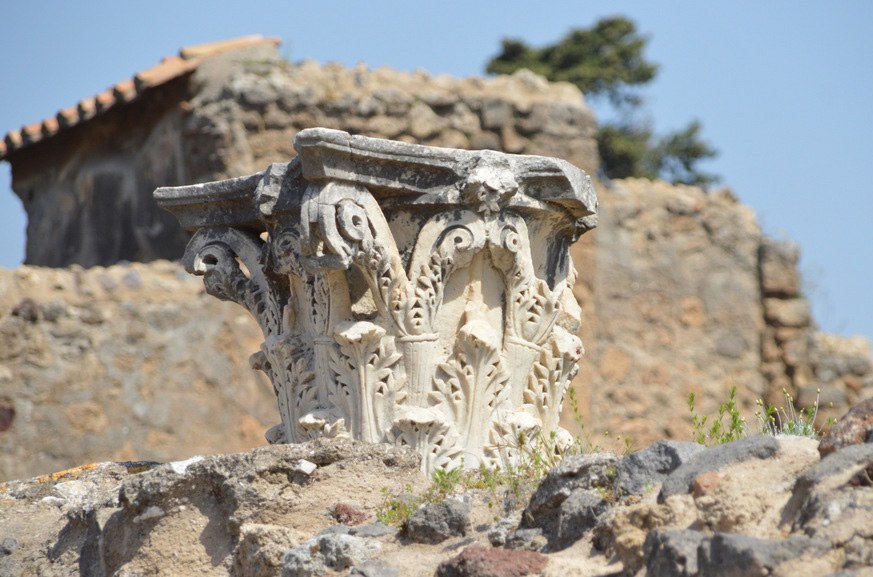
Fact #3: Gone with the Wind
The real culprit of Pompeii was not the vicious volcano eruption but the wind. The wind blows in a southwestern direction during the summer-autumn period. If the winds had not interfered, the dense volcanic ashes would mostly have blown out to sea over the Bay of Naples. This would have left a good portion of the city unscathed and given the people of Pompeii some time to escape the lava. Unfortunately for them, the wind blew in the opposite direction (i.e. northwest). Due to this, the city of Pompeii became an easy target of the angry lava and tremendous ash cloud that engulfed the area.
Fact #4: Pompeii Was Preserved for 2000 Years
Perhaps the most interesting fact about Pompeii is its actual discovery. The city remained lost in time for over 2,000 years due to the 19 ft deep volcanic ash and lava burying it. This, however, was a blessing in disguise for historians. The thick layer of ash preserved the city against environmental erosion elements (like wind, sunlight, and rain) that could cause the ancient remains to have perished along with the city’s inhabitants. The volcanic ash literally left archeologists a snapshot in time as to the people and life of ancient Pompeii.
Trivia: The discovery of Pompeii was an accident. Italian architect Domenico had set out to dig a water tunnel but found a lost city instead.
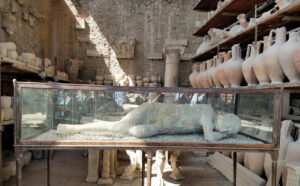
Fact #5: You Can Meet the Plaster People of Pompeii
The excavations of Pompeii over the years have unearthed hundreds of bodies from the ashes and pumice that blanketed the entire area. The volcanic material had encased the dead bodies in a hard, solid mass. When the flesh and organs decomposed, these empty spaces were all that was left of Pompeii’s citizens. In the 1860s, Italian architect Giuseppe Fiorelli instructed excavators to fill the cavities with plaster of paris. Subsequently, it led to the formation of plaster casts that replicated the bodies of Pompeii’s civilians that were mummified from the great volcanic eruption.
Trivia: The most famous cast of Pompeii is a dog.
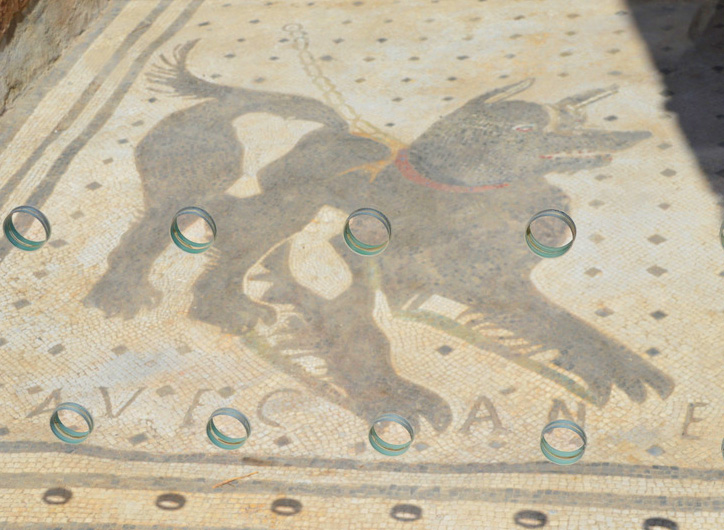
Final Words: Pompeii in the Present
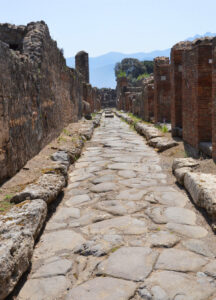
In the end, these interesting facts about Pompeii continue to shock and delight history buffs and tourists alike. The overall popularity of Pompeii has led it to become one of the most famous UNESCO World Heritage Sites in Italy. Whether you like history or not, nobody can resist the urge to see the plaster people of Pompeii, learn about this once thriving ancient settlement and learn about the volcano Mt. Vesuvius that still lurks in the backdrop of Pompeii to this very day.
All of us at Tavola Tours have found that Pompeii and Mt. Vesuvius are a big favorite for our guests. Don’t forget to ask us about this fascinating UNESCO World Heritage Site when planning your adventure in Campania with us.
